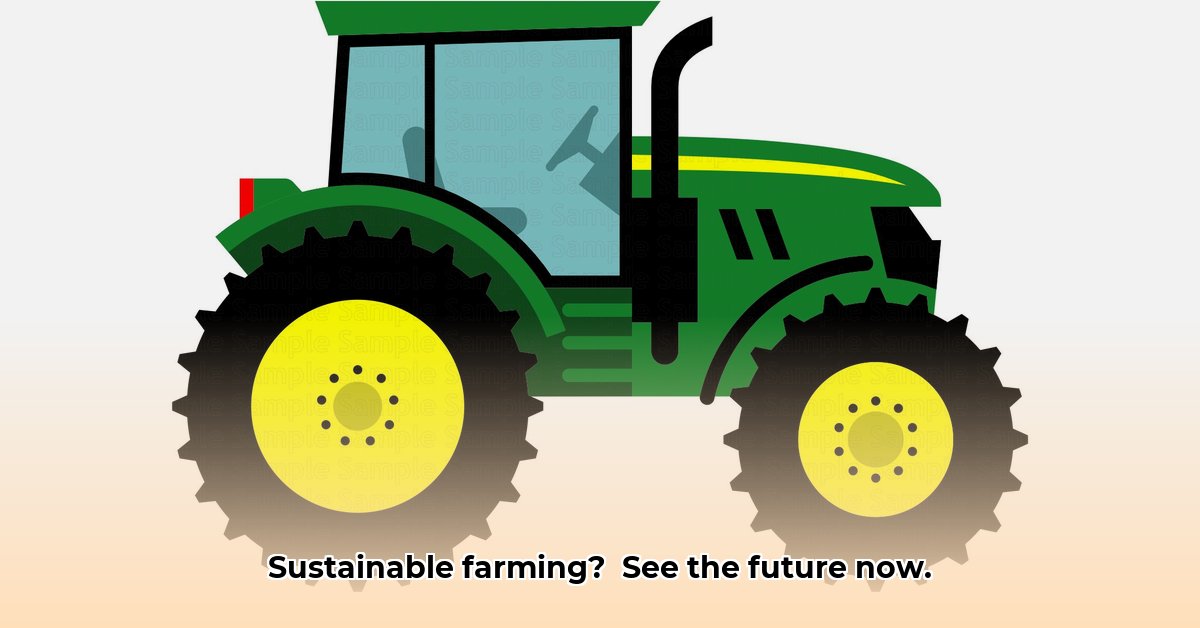
Those seemingly simple images of tractors—often found as clip art—represent a profound shift in agriculture. They symbolize a transition towards sustainable farming practices, revolutionizing how we grow food and protect our planet. This isn't just about bigger yields; it's about smarter, more sustainable methods that benefit both farmers and the environment. Learn more about electric tractors at this site.
The Smart Tractor Revolution: Precision Farming Takes Center Stage
Forget the image of a farmer scattering seeds across a vast field. Modern farming utilizes GPS-guided tractors, sensors monitoring soil moisture, and drones surveying for problems. This precision farming minimizes waste of resources like water and fertilizer, saving farmers money and reducing environmental impact. The evolution from simple clip art tractors to sophisticated machines is remarkable; it’s about smarter, more efficient practices. This precision approach is increasing crop yields while lessening the environmental impact. Is it any wonder this is becoming the new standard?
The Rainbow of Crops: Why Crop Rotation Matters
Imagine a field bursting with diverse plants, instead of a single crop. This crop rotation and diversification is like giving your garden a multivitamin. Rotating crops naturally replenishes soil nutrients and reduces pest and disease risks. It's nature's pest control! This builds a more resilient ecosystem and is reflected in modern clip art featuring tractors alongside a variety of crops. Ongoing research explores optimal crop rotations for diverse climates and soil types, further enhancing this sustainable approach.
Harnessing the Sun: Renewable Energy's Role in Sustainable Farming
Many farms now utilize renewable energy sources like solar power. Solar panels power irrigation, lighting, and even electric tractors, significantly reducing carbon footprints and saving on energy costs. Updated clip art often shows solar panels integrated into farm designs, highlighting this eco-conscious approach. Experts predict this renewable energy transition will accelerate as technology advances and becomes more cost-effective. This shift is not only good for the planet; it also makes economic sense for farmers.
Gentle on the Earth: Reduced and No-Till Farming
Traditional plowing disturbs soil structure, leading to erosion and nutrient loss. Reduced and no-till farming methods minimize this disturbance, preserving soil health and reducing water runoff. Healthier soils better retain moisture and nutrients, fostering more resilient crops. The imagery in modern clip art has changed to reflect these techniques, often showcasing specialized equipment designed for no-till farming. A recent study highlighted that no-till farming resulted in a 20% increase in water retention in arid regions. While some farmers face challenges with weed control, ongoing research offers effective IPM solutions.
Smart Pest Control: Integrated Pest Management (IPM)
Integrated Pest Management (IPM) is a multifaceted approach that reduces reliance on harmful chemical pesticides. It involves monitoring pest populations and using a combination of methods—natural predators, crop rotation, etc.—for pest control. It's a smarter, eco-friendlier strategy often visualized in updated clip art alongside the tractors. Experts believe widespread IPM adoption could dramatically decrease chemical pesticide use in agriculture, protecting both human health and the environment.
The Challenges and Rewards of Sustainable Agriculture
Adopting sustainable farming practices requires investment in new technologies and training. Farmers need access to financial support and incentives. However, the benefits are substantial: increased yields, reduced environmental impact, and improved economic resilience. Even the evolution of clip art of tractors mirrors this journey, showcasing the transformation toward environmentally conscious farming.
A Greener Future, One Tractor at a Time
Sustainable agriculture isn't a trend; it's a necessity. By embracing innovation, precision farming, renewable energy, and thoughtful practices, we build a more sustainable food system. The simple clip art of tractors has become a potent symbol of this transition—a visual reminder that farming is evolving to nourish both people and the planet.
Key Takeaways:
- Precision farming uses technology for optimized resource use, reducing waste and environmental impact.
- Crop rotation and diversification enhance soil health, pest control and biodiversity.
- Renewable energy sources, like solar power, decrease carbon footprints and energy costs.